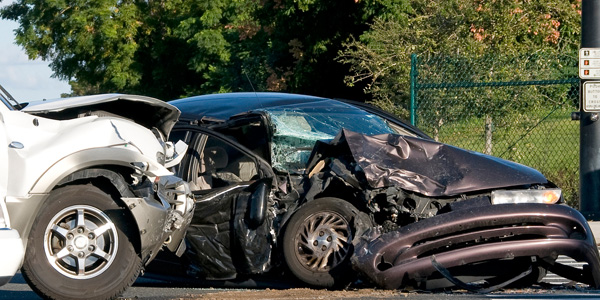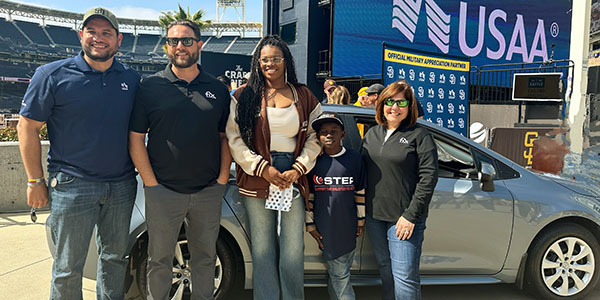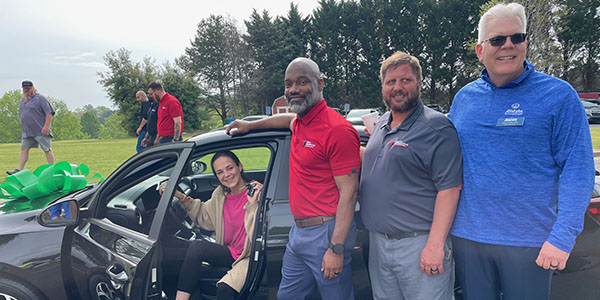 Profit isn’t a dirty word. That was the general theme of the Coalition for Collision Repair Excellence’s (CCRE) two-day seminar held March 27-28 in Cincinnati, Ohio.
Profit isn’t a dirty word. That was the general theme of the Coalition for Collision Repair Excellence’s (CCRE) two-day seminar held March 27-28 in Cincinnati, Ohio.
Four seminars offered information and advice on “how to take control of your business free of third party interference.” The CCRE believes that insurance companies are merely payers of claims and have no business getting involved in the business of collision repair.
“We’re in business to make money,” said CCRE President Tony Lombardozzi. “We’re the experts in collision repair. And we only have one customer: the vehicle owner.”
In his presentation, Lombardozzi emphasized the importance of documenting everything in the repair process for the benefit of the shop and the consumer. But he said the problem with not getting compensated properly all starts with the estimating guides.
“It went from a ‘part number service’ to a ‘crash estimating guide,’” he said. “Look at your retail price versus your cost. If you’re estimating using the database, you’re getting your price at cost. You don’t have to accept the guide as the Bible.”
Lombardozzi asserted that the guide became the Bible in the 1970s to the detriment of repairers, and new terms such as overlap, conjunctive repairs, blending, competitive labor rate, spot paint, agreed price and others were introduced. That, he claims, was the beginning of the repairers handing over control of their businesses to insurers.
“Insurers then infiltrated NACE and set a plan for control in motion,” he said.
Lombardozzi believes that the four major sources of what he termed “insurer control” are: labor time guides, suppressed labor rates, fear of reprisal and steering. Eliminate those controls, he said, and repairers are well on their way to eliminating their problems.
“We’re becoming a bunch of dummies who are just spraying cars and getting parts and paint procured for them and saying, ‘Pay me what you think I’m worth,’” he said.
One way to stop steering, he said, is to eliminate the DRP system, which he believes is “dollar-driven” and “designed to divide the industry.” He won’t hear about reforming DRPs.
“How do you improve an illegal system?” he asked. “Make it less illegal?”
For those shop owners fearful of dropping DRPs, he said they should think about how they first generated business through word-of-mouth and advertising.
“Once you get over the fear, the work will come back,” he said.
Other advice he offered to shops was to establish a retail pricing structure and bill in dollars, and also update their blueprint estimating methods involving complete vehicle disassemblies. Supplements, he said, are bad news for repairers and lead to a shaky foundation for repair.
“That’s like contracting with someone who has no construction experience to build your house and telling him, ‘That’s okay, as you build and encounter problems you can just shore them up as you go,’” he explained.
Lombardozzi also advocated the use of cost accounting programs for figuring out the cost of paint and materials and charging appropriately, citing Mike Parker, president of the Vermont Auto Body Association and president of Parker’s Classic Autoworks in Rutland, Vermont, who he says lost $73,000 in paint and materials costs and turned it into a $10,000 gain (click HERE for story on shop owner Lee Amaradio who was prompted to abandon the paint hours X dollars formula due to losing $150,000 in paint and materials in one year).
At his shop, Lombardozzi also charges procedural fees such as a booth usage fee, bench usage fee, recharge A/C time and recycling machine usage fee.
“Every other industry charges these fees,” he said. “Why shouldn’t we?”
Finally, Lombardozzi said shops should provide a “final invoice,” as an estimate is just a guess and only becomes worth something, he said, if the repairer lets it.
“If the insurer feels you overcharged, tell the customer to e-mail the insurer for subrogation to prove you overcharged,” he said. “He or she will eventually see that you’re not the problem, the insurers are.”
Job Costing
Steve Behrndt, owner of Crawford’s Auto Center in Downington, Pa., and Rick Dotterer, owner of Dotterer Auto Body in Pottstown, Pa., teamed up to emphasize the importance of job costing.
“Body shops don’t job cost because they don’t want to know what they’re losing,” Behrndt said. “If the database times are wrong, we don’t know because we don’t job cost. Why do we recognize the estimate? Because we’ve been manipulated to believe it is the actual cost of repairs.”
Dotterer pointed out that paint costs have risen between 32.4 and 45.7 percent from 2004 to 2008, depending on the brand used. But he admitted he doesn’t really care what it costs today.
“For me, it’s cost plus mark-up,” he said. “Insurers will tell you that body materials are part of overhead. Wrong! Overhead is basically anything that keeps your shop open.”
Dotterer went on to say that if a shop is using the paint hours X dollars formula, it’s losing money. He suggested switching to invoicing for paint and materials using:
- PMC Logic
- Paintex
- Mitchell Refinish Guide
- Paint manufacturer software
- Individual shop pricing
Dotterer trains his employees to track everything they use in the repair process, from rubber gloves to seam sealer to sandpaper. He has them throw the used materials into a box or plastic tub for each individual job in case the insurance adjuster questions his invoice.
“If you can justify why you’re charging what you charge, insurers have no problem paying it,” he said.
Dotterer says insurers have no problem noting parts price increases, but when shown paint and materials costs say, “We don’t pay for that.”
“My reply to them is, ‘What’s the difference?’” Dotterer said. “When insurers say ‘it’s not included’, you’re basically subsidizing the repair.”
“Insurers have trained us on how to operate our business, but we need to train them,” Dotterer concluded. “We need to tell them, ‘I cannot operate the way you want me to and stay in business.’ Paint and materials is an immediate way to get some sort of relief.”
Legal Documents
Chances are that not many repairers have ever heard of the OODA Loop, a concept created by military strategist and USAF Colonel John Boyd that stands for Observe, Orient, Decide and Act. But Erica Eversman, consumer advocate and attorney, suggested that shops apply it to their businesses to achieve and maintain freedom of action and maximize their chances for survival and prosperity.
She also suggested using various forms (with proper knowledge and legal guidance) to protect their own interests such as:
- Damage analysis (appraisal, estimate)
- Repair contract
- Assignment of proceeds
- Notice of deficiency
- Notice of additional repairs
- Parts notice and authorization
- Termination of repair
According to Eversman, the repair contract cements the shop as the “authorizing authority for repairs.” Also, it outlines:
- Methods of repair
- Parts permitted for use
- Payment obligations
- Recovery in the event of non-payment
- Deficiency payments
The assignment of proceeds form (click HERE for video of Erica Eversman discussing this legal term):
- Entitles repairer to receive payment directly from insurer
- Does not limit payments to only what insurer elects
- Does not act as “separate contract” between repairer and insurer
- Puts insurer on notice that consumer has assigned right to receive payment covering repair obligations to repairer
The notice of additional repairs form:
- Recovers control of repair process (no more insurer delays, grounds for ensuring payment)
- Puts customers’ interests first
- Minimizes repair facility downtime
The parts notice and authorization form:
- Puts customer on notice of issues with parts
- Gives customers information to counter insurer promotion of aftermarket and salvage parts
- References compliance with state laws requiring notice and approval
- States repairer’s position on use of aftermarket or salvage parts
- Limits liability for repairer
The notice of deficiency form:
- Cements repairer as professional
- Identifies unsafe procedures
- Identifies description of inadequate parts
Phil Mosley, president of the U.S. Alliance of Collision Professionals and attendee of the seminar series, emphasized that these forms are all legal documents that shouldn’t be used without the proper understanding of them.
"They’re tools that, like any other, can be effective or equally dangerous and thus should be not be used ill-advised or by someone who isn’t proficient in the topics they cover," Mosley said.
For more information on the CCRE, visit www.theccre.com.













